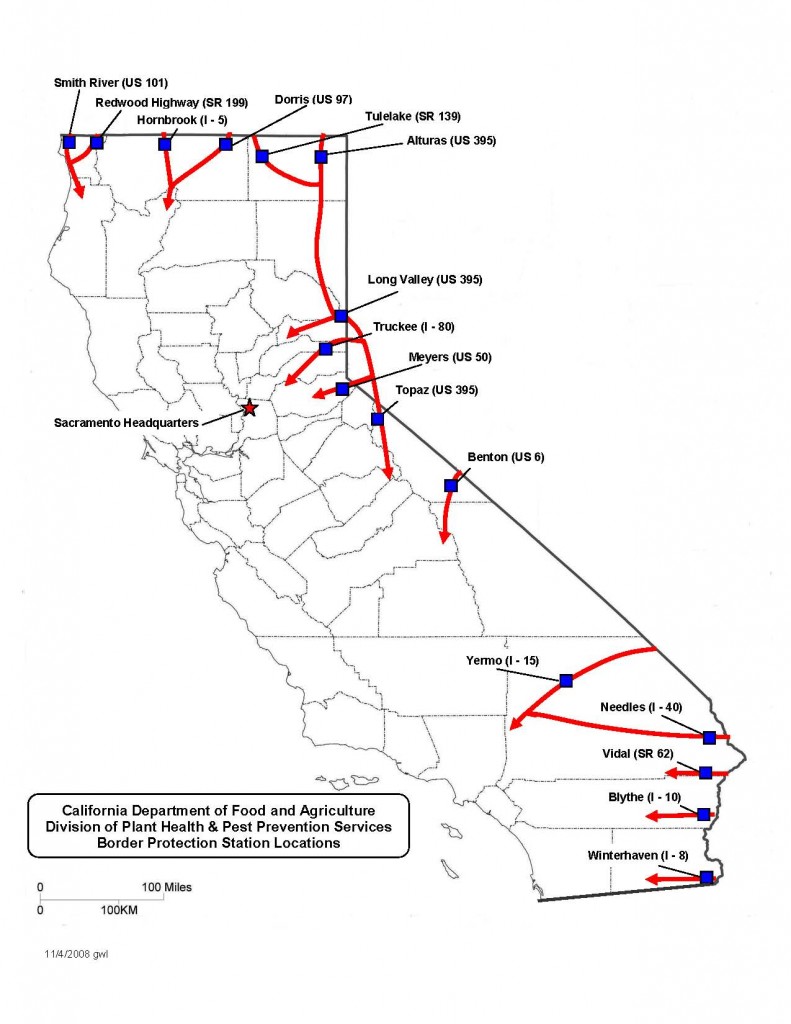An old saying goes, “An ounce of prevention is worth a pound of cure.” The California Department of Food and Agriculture practices this principle through its Border Protection Stations. There are 16 of them along the state’s perimeter, staffed by state employees dedicated to protecting our food supply and environment from invasive species. Each year, the Border Stations intercept thousands of potentially dangerous invasives before they can enter California.
Two recent issues demonstrate the broad reach of the Border Stations. In late 2014, inspectors at our Needles station stopped a moving van and found a citrus tree, which was confiscated. Subsequent testing revealed it was carrying huanglonbing (HLB), or citrus greening, a fatal disease of citrus spread by the Asian citrus psyllid (ACP), which has infested a substantial portion of southern California and has also moved into some counties to the north. Fortunately, HLB has been detected in the state just once, and the excellent work at Needles helped keep it that way.
With recent detections of high-pathogenic avian influenza (AI) in wild birds in Washington-state, Oregon and California, CDFA is keeping close tabs on all birds passing through its Border Stations. Our veterinarians know it’s a short journey for AI from wild birds to commercial flocks, so it’s critical to monitor the disease very closely. In this recent event, early detection by regulatory agencies in all three states and preventive measures already in place on our farms have helped prevent these cases from moving into our commercial flocks. It is important to note that the detected strains of AI are not a risk to human health and have not been found in commercial poultry in the United States – and the proactive, preventive efforts underway here in California help keep it that way, including the crucial work at Border Protection Stations.



